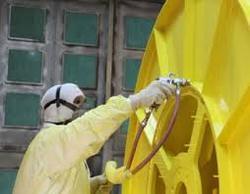Photonic Crystal Sensors
Photonic Crystal Sensors
Physics
Copyrighted sensors based on photonic crystals for highly sensitive chemical and biological detection.
The sensors in question utilize photonic crystals, which are periodic structures that affect the behavior of light in a manner similar to how semiconductor crystals influence the flow of electrons. By carefully designing the photonic crystal structure, it is possible to create sensors that are highly sensitive to changes in the refractive index of the surrounding medium, which can be induced by the presence of specific chemicals or biological agents. These sensors typically consist of a photonic crystal layer deposited on a substrate, with the crystal structure being engineered to produce a specific optical response when exposed to the analyte of interest. The photonic crystal can be designed to have a defect that creates a resonant cavity, which enhances the interaction between the light and the analyte, thereby increasing the sensitivity of the sensor. The detection mechanism often relies on the measurement of shifts in the resonant wavelength or changes in the reflectance/transmittance spectrum of the photonic crystal when it interacts with the analyte. This can be achieved through various optical interrogation methods, including spectroscopy or interferometry. The use of photonic crystals for sensing applications offers several advantages, including high sensitivity, compact size, and the potential for multiplexing, which enables the simultaneous detection of multiple analytes. Furthermore, these sensors can be fabricated using standard semiconductor processing techniques, making them suitable for mass production and integration with existing technology platforms. The intellectual property protection for these sensors would likely involve patents covering the specific photonic crystal designs, fabrication methods, and detection algorithms that provide the enhanced sensitivity and selectivity for chemical and biological detection. The patent claims would focus on the unique structural features of the photonic crystals, the materials used, and the system's functionality, ensuring that the invention is adequately protected from infringement.
Medical diagnostics: These sensors can be used to detect biomarkers for diseases, allowing for early diagnosis and treatment. For example, they can detect specific proteins or antibodies in a patient's blood or urine, enabling doctors to diagnose conditions such as cancer or infectious diseases.
Environmental monitoring: Photonic crystal sensors can detect pollutants in water and air, enabling real-time monitoring of environmental quality. They can identify specific chemicals or biological agents, allowing for swift action to mitigate their impact.
Food safety testing: The sensors can be used to detect contaminants or pathogens in food, ensuring the safety of the food supply. This can help prevent foodborne illnesses and reduce the economic impact of food recalls.
Biodefense: Photonic crystal sensors can detect biological agents, such as bacteria or viruses, that could be used as bioterrorism agents. This can enable early warning systems and rapid response to potential threats.
Industrial process control: The sensors can be used to monitor chemical reactions and detect impurities in industrial processes, enabling real-time quality control and optimization of production processes.
Pharmaceutical development: Photonic crystal sensors can be used to detect specific chemicals or biological molecules, enabling the development of new drugs and therapies.
Wastewater treatment: The sensors can be used to detect pollutants in wastewater, enabling more efficient treatment and reducing the environmental impact of wastewater discharge.
Biosecurity: Photonic crystal sensors can detect biological agents in secure facilities, enabling the protection of sensitive areas and preventing unauthorized access.

World Health Organization (WHO)
Audio and visual technology
View Patent
